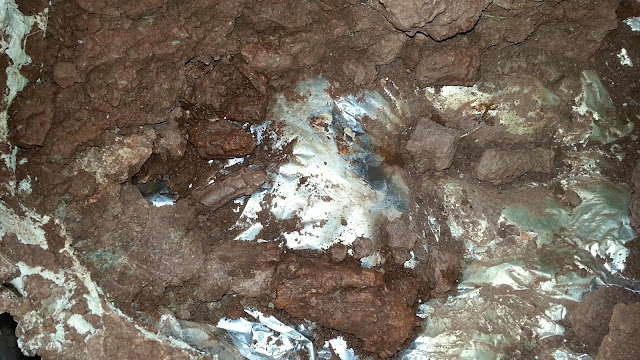Last week I only went for day 1 because I was out of town the other day. One of the other volunteers that I've gotten to know was working on Blind Smiley. Smiley has been taken out of the large jacket I went on a treasure hunt for on the 4th floor with David and another volunteer to find and transferred into a smaller jacket. There's actually two Diplocauluses, or Boomerang Heads, is the smaller jacket. They have such tiny bones compared to Dimetrodons. The only one I've work on was in Seymour last school year, but I'd love to work on a jacket with one of them after I finish my two Jane jackets; so I can practice my detail work.
I continued to work on the cleaning the clump of bones/dirt I was working on last time. I used the microscope to get a better view and found out how to adjust the height of the arm it's on, which was a great help. I also learned where the sharpening stone is for the pick tool I've been using is located. This made my life much easier because the pick was starting to get dull and I didn't know how to sharpen it. I'll definitely be using that stone again in the future!





























